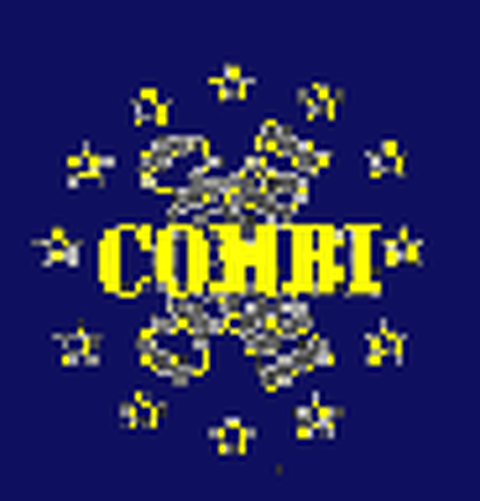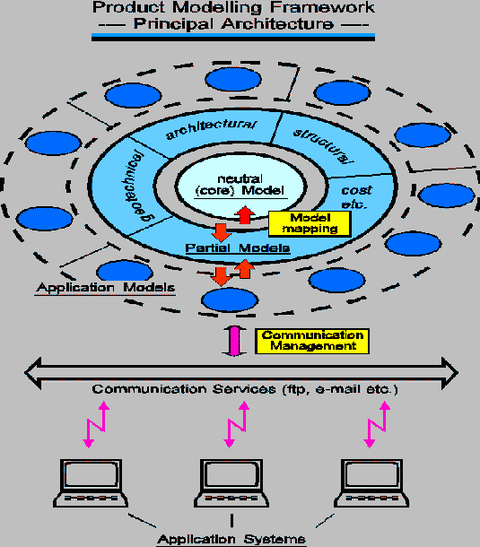Computer-Integrated Object-Oriented Model for the Building Industry (COMBI)
Project Overview
Essential for the improvement of the quality/cost ratios in the complex field of building design and construction is the application of advanced IT methods, that can provide for integrating the activities of those involved in the design and construction process, reduce design errors and speed up delivery times.
The ESPRIT III project No. 6609 COMBI - a coordinated effort of 6 partner teams with a duration of over 3 years (October 1992 - December 1995) - has been established with the aim to develop a prototype of a computer integrated environment for cooperative design and concurrent engineering in the building industry that envisions a future intelligent system for CAE/CIC based on the idea of "integration by communication". Research has been focused on promoting the on-coming ISO STEP standard - not so much by developing new STEP tools, but by establishing an overall convept for a gradual STEP-wise integration of commercial AEC software.
The scope of the COMBI prototype covers a representative set of topics from design practice in the building industry which ensures that the COMBI framework will be sufficiently general to accomodate future extensions on a much broader scale. Currently, it includes the structural, foundation and (partially) architectural design of reinforced concrete industrial and office buildings in the feasibility preliminary design, sketch, outline and detailed design phases.
The COMBI modelling framework has been developed so that the evolutionary, multi-stage and multi-agent nature of the design process can be taken into account in a unified approach. Its architecture can be represented schematically by 3 hierarchically structured levels.
The two inner levels build the common kernel of the integration framework. It consists of a domain-independent neutral model and several domain-dependent partial (aspect) models. These partial models contain high-level data structures that serve as a unification basis for linking the different application models within a design domain - architecture, structural engineering etc. The neutral model is, in turn, the "bridge" between the separate partial models that supports the mapping and consistency of their data structures with the help of special context-free objects and reasoning mechanisms.
On the outermost level are located the application tools (design agents) that support the work of the individual designers and are their primary means to communicate with the integrated system. The COMBI prototype foresees the development and integration of several design agents - all being large, sophisticated software applications (three of them newly developed knowledge-based decision support systems) with specialised functionality and application-specific data models. To provide for a successful product data exchange between these design agents, COMBI addresses the following communication and interoperability problems:
- mapping between different aspects of the same physical objects
- transformations between different object representations
- dynamic object evolution and re-classification.
COMBI adheres as much as possible to the ISO STEP methodology. Its conceptual product modelling framework is created by using STEP modelling tools and is defined formally by means of EXPRESS. The schemata of the COMBI neutral, partial and application models use parts of the STEP "Integrated Generic Resources". The actual exchange of product data is based on the ISO 10303-21 neutral file specification. An interesting spin-off of the project is expected to be the contribution to the newly started development of a STEP "AEC AP Framework".
The first implementation results of COMBI have already been incorporated in the software products developed by SOFiSTiK (Greece/Germany) and D'Appolonia (Italy). The validation of results is done in a testbed environment based on a real case project - the Flight Simulator Building of Olympic Airways, Greece at Thessaloniki.


